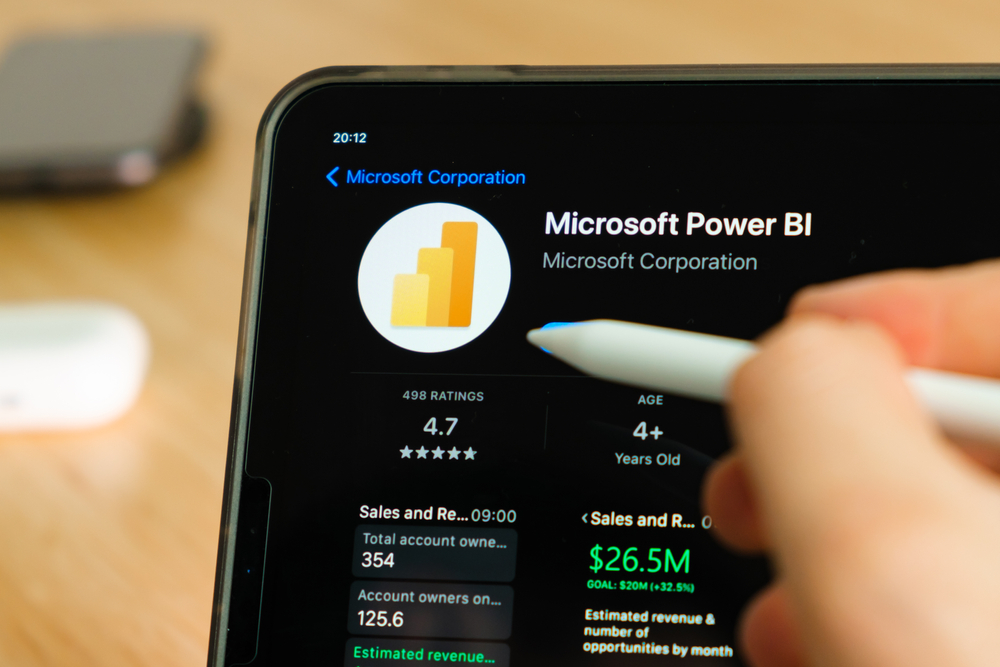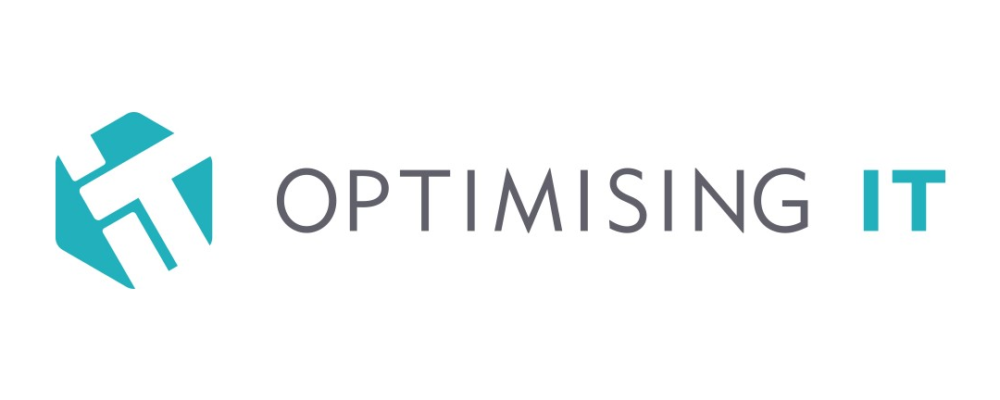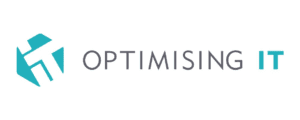
Although all organisations constantly gather large amounts of data, many don’t realise this valuable information is available or lack the know-how to interpret it correctly. But, by using business intelligence reporting tools, like Microsoft Power BI, companies across a broad range of sectors, such as retail, education and healthcare, can harness their current and historical data’s untapped potential. This helps to propel them forward towards even greater success.
This beginners guide will give you all the information necessary to understand the basics of business intelligence and how it works. We’ll also define what Microsoft Power BI is and explain how Optimising IT’s team of experts can help you make the most of it. Let’s dive in!
Table of Contents
- What Is Business Intelligence?
- Business Intelligence vs Business Analytics
- How Does Business Intelligence Work?
- Difference Between Traditional BI And Modern BI Solutions?
- Benefits Of Using Business Intelligence Tools
- Common Business Intelligence Challenges
- Why Choose Microsoft Power BI?
- Our Top 3 Microsoft Power BI Practices
- Other Features Of The Microsoft Power Platform
What Is Business Intelligence?
Business intelligence is an umbrella term. It covers all methods and processes of collecting and analysing data sets and then presenting them in dashboards, reports, graphs, maps, charts, and other forms of interactive data visualisation. This offers quick and easy-to-digest insights about a company’s current state.
From machine performance to employee wages, organisations can utilise BI to monitor hundreds of metrics harvested from their websites, apps, surveys, financial records and more, to serve a whole host of different purposes. Some of the most common uses are:
- Tracking staff performance and engagement
- Conducting data comparisons against competitors
- Analysing customer behaviour
- Identifying opportunities to increase profits
- Evaluating business processes
- Spotting market trends
- Detecting potential problems before they occur.
However, the ultimate aim of BI is to streamline the data querying process and offer leaders a comprehensive view of their business analytics, enabling them to easily adapt to changes in the market and make better and more informed decisions.
Business Intelligence vs Business Analytics
Although many see Business Analytics as a subset of Business Intelligence (BI), the two areas are actually very different and shouldn’t be confused. BI is all about the visual representation of data, collating historical and present figures to determine what has happened or is currently happening. On the other hand, BA practices like data mining and predictive analysis focus on extracting insights from historical data to help anticipate future outcomes and trends so your business can make more informed decisions.
How Does Business Intelligence Work?
The BI process begins by collecting raw data from multiple internal IT systems and external sources before processing the information and storing it in a central location. Then, users can analyse and extract the answers they need through business intelligence tools, such as Microsoft Power BI. Once they’ve created data visualisations to make their findings easier to share and understand, these dashboards and reports can be used to aid strategic, operational decision-making.
Also, some confuse the purposes of dashboards and reports, so to clarify:
- A dashboard is a tool that manages the visual information, tracking, analysing and displaying your KPIs (key performance indicators) and monitoring the progress of your business. In most business intelligence platforms, including Microsoft Power BI, dashboards are fully customisable, allowing you to design them to meet your branding requirements and make sense to your audience’s industry.
- A report is a document used to present the analysed data and provide context to your readers. Typically these are exported from the BI tool to make sharing and distributing this critical business information simple.
What’s The Difference Between Traditional BI And Modern BI Solutions?
Business intelligence isn’t a new idea, and software for assessing performance and powering innovation has been around for decades. However, the way we collect, analyse and view this data is starting to change significantly.
In the past, traditional BI reports were generated and delivered by an entire department of IT executives or business analysts who spent a considerable amount of time and effort conducting tedious tasks using tools that offered very little autonomy. Today, self-serve platforms are revolutionising the world of BI by enabling leaders and their employees to access vital real-time insights into key company metrics directly and on-demand.
As dashboards become more flexible and easier to personalise, reports quicker to produce and analyse on the fly, and engaging data visualisations simpler to digest, many organisations have now turned to modern business intelligence tools.
Benefits Of Using Business Intelligence Tools
By not taking advantage of the wealth of data your company is sitting on, you leave your executives and staff no choice but to make critical decisions based solely on their accumulated knowledge, experience and gut instinct. Conversely, give your employees the means to collect the information they require so they can soundly back up their judgments, and you’ll develop stronger business strategies and find fewer missteps occur.
Here are just a few of the many other benefits that companies experience when utilising BI tools:
- Enhanced decision-making — data analysis removes the guesswork, offering you a clearer insight into your business and empowering your teams to make smarter and more informed choices.
- A better understanding of their customers — use the information gathered to shed light on emerging trends, customer behaviours and shopping patterns, so you can make your services and products more appealing and boost conversions.
- Increased operational efficiency — accurately track sales, marketing and financial performance and discover new revenue streams and opportunities for growth.
- A competitive edge over rival companies — at the end of the day, knowledge is power, and having access to these critical insights will ensure you’re always one step ahead of your competition.
- A greater ability to drive continuous improvement — this information highlights your organisation’s weaknesses, such as workflow bottlenecks, long-winded processes that need speeding up or areas where you’re losing money so you can make improvements and become more profitable.
Common Business Intelligence Challenges And How To Overcome Them
Unfortunately, many businesses, especially SMEs, are put off investing in BI tools, thinking they are only suitable for multi-million pound, global conglomerates and would be too expensive and time-consuming to implement. In truth, making the most of your data is more than worth the initial cost. This will enable you to streamline your processes, optimise performance and offer you a whole host of other business-boosting opportunities — some of which are mentioned above.
To help you see past these potential roadblocks, here are three of the most prominent BI challenges and how to address them:
- Lack of company-wide adoption — it can be a real struggle trying to wrench your employees away from their familiar Excel spreadsheets and encourage them into switching to BI software. They may feel discouraged to use these new tools due to not having enough time in their busy schedules to experiment with them. They may also have concerns about a lack of technical knowledge or simply not understanding the programme’s benefits.Counteract this with communication. Provide your employees with plenty of learning material and resources, stress the importance of leaving behind their old static spreadsheets and the advantages of progressing to interactive and dynamic dashboards. Also, opt for self-serve business intelligence software as their drag-and-drop interfaces require the user to have little training or prior analysis skills, empowering everyone in your company to have the ability to collect, prepare and analyse complex data.
- Incorrect or incomplete data — with so much data available to businesses in today’s digital world, sifting through it to find the nuggets of information that will actually aid your progress can be a little like finding a needle in a haystack. Plus, sometimes, even retrieving the statistics buried in your platforms, applications, and systems can seem impossible — resulting in lost or missing data.First, avoid this by understanding your company’s specific KPIs and goals, such as increasing turnover, improving customer satisfaction or reducing staff turnover. Do this before collecting your data to avoid gathering large amounts of unnecessary figures to wade through. Then, validate the accuracy of the data and clean it by scrubbing it for duplicates or irrelevant information before processing and analysing it.
- Lack of a clearly defined BI strategy — not having a clear idea of the answers they’re searching for or the problems they’re trying to solve is probably the most common reason organisations give up on using BI software. No matter the wealth of high-quality data you have at your disposal, it’s virtually useless unless you know the queries you want to run.Instead of simply diving headfirst into your data without a plan, potentially costing you a lot of confusion, frustration and wasted effort, give your data direction by developing a strategic roadmap and choosing the best BI solution to suit your requirements. Or contact Optimising IT to discuss our Business Intelligence Consultancy services and let us help you find the insights you need to grow and succeed.
Why Choose Microsoft Power BI?
Many business intelligence tools are available on the market, but Microsoft Power BI self-serve analytics platform stands out as one of the most comprehensive, intuitive and cost-effective options. While you will need a compatible Microsoft 365 license to view these reports, the most significant benefit of using this industry-leading business analytics solution is that it’s incredibly simple for you to connect your data. Its ever-growing library of 120+ free connectors supports cloud-based sources like DropBox, Google Analytics and SalesForce and Excel spreadsheets, CSV files and other information located on-site.
The second major plus of Power BI is its level of security. It offers end-to-end security, protecting your dashboards, reports and data sets even when they’ve been exported into different formats, like Powerpoint or PDF, or shared outside your company. Plus, it gives you the control to manage user access and security from the same interface without needing other tools to ensure you meet compliance and regulatory standards.
Lastly, and most importantly, you don’t need to be a data scientist to understand Microsoft Power BI. Beginners and experts can prepare data, choose how much detail they wish to display and quickly access the insights they require using dashboards. These are updated in real-time and tailored to your KPIs.
Also, our Microsoft Power BI consulting services can make business intelligence even more straightforward. As vast amounts of data are available, we’ll work alongside you and help pull together the relevant information. This will maximise the platform’s benefits and compose the insights into accurate and understandable reports — perfect for presenting to management, stakeholders and team members.
Our Top 3 Microsoft Power BI Dashboard Best Practices
-
- Keep your Power BI dashboards simple — with so many charts and graphs for you to play around with and data to display, it can be incredibly tempting to overload your dashboards with unnecessary information. Before you begin, always keep in mind the message you’re trying to convey and avoid choosing style over functionality.Ensure your users can understand the data at a glance by using fewer visualisations as these can slow down performance, including tooltips as a way of adding extra information. Don’t be afraid of using bar or line charts as, even though you may think them boring, they are instantly recognisable. Also, people tend to read from top left to bottom right, so position the most relevant data, like KPI’s, in the top corner and then work your way down, increasing the font size and using brighter colours to really make your key points stand out.
- Think about your audience — when designing Power BI dashboards, it’s essential to make them accessible to the end-user. So as not to make your data too overwhelming, ask yourself, “what metrics will my audience need for them to make their decisions effectively?”, “what learned assumptions might affect the way they interact with my visualisations?” and “how do I expect them to use my dashboard?”.Next, think of ways to make the information more digestible. For instance, use fewer tiles to make your dashboard readable on smaller screens. If it’s likely people will view it on a tablet or smartphone, avoid ambiguity by using terminology relevant to your industry, and round off long numbers where possible, as those with more than four digits can make the data difficult to read.Also, as most organisations share their reports and dashboards with their employees, department heads, partners and sometimes even clients, you must apply proper security measures and assign the correct roles to your users. To help, use Row Level Security (RLS). This is another clever feature of Microsoft Power BI that enables you to pick which user levels can view specific data rows, also making your dashboard simpler to read.
- Choose the right visualisations for your data — the purpose of visualisations is to paint a clear and easy-to-interpret representation of your data, and it’s best to avoid using them just for the sake of adding variety or interest to your dashboards. A few of our top tips here would be to stay away from 3-D charts as they are harder to read than flat visuals, be consistent with your colours, time frames and measurement scales, and only use data labels for more complex visualisations. Too many can clutter your dashboard.
Other Features Of The Microsoft Power Platform
Power BI is one of the three main products included in the Microsoft Power Platform. Its purpose is to give non-technical users the ability to quickly and easily do more with and gain more significant insights from the digital data their business collects without relying on busy IT departments or hiring an external partner. Plus, the fact it connects seamlessly with Office 365, Dynamics 365, Azure, and hundreds of other third-party apps, such as Google Analytics and Twitter, makes it even more straightforward for the user to collate all of their information in one place.
The two other programmes on this platform are PowerApps and Power Automate, which used to be known as Microsoft Flow. PowerApps is a custom app development tool that enables individuals to build mobile-friendly apps without learning how to code. Power Automate allows you to create automated workflows, such as setting up alerts, emails, push notifications and more, in minutes, helping your staff to streamline their process, save time doing repetitive tasks and reducing the risk of human error.
At Optimising IT, our passion for data has enabled us to help numerous companies extract powerful insights from their IT systems, software and applications, and identify insights that can improve their processes and boost their revenue. Discover how we can use Microsoft Power BI to better your business by requesting a call back for our expert team today.













